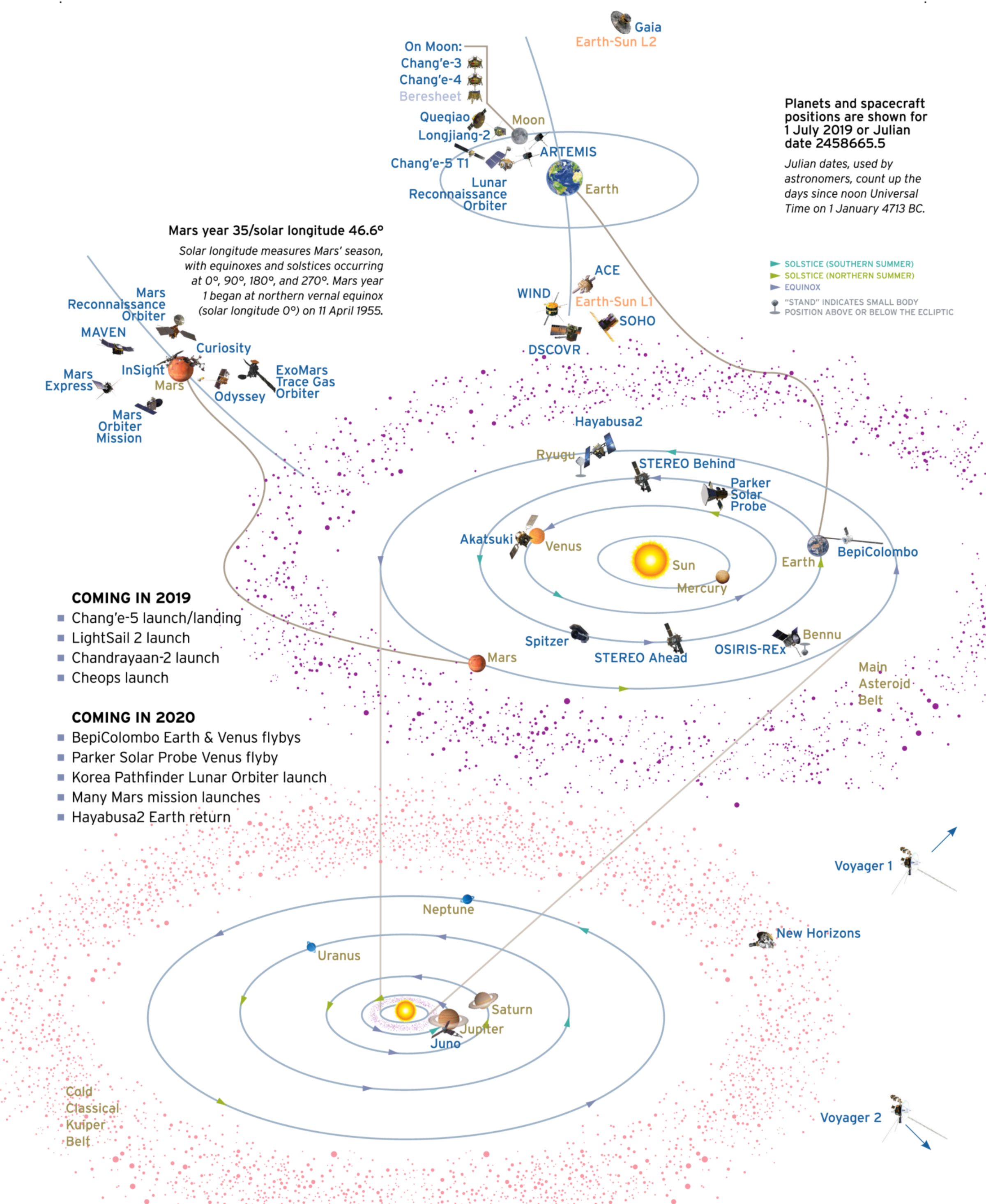Where We Are on 1 July 2019
An At-A-Glance Spacecraft Locator
The last quarter has seen few changes in the roster of planetary exploration spacecraft. SpaceIL’s lunar lander Beresheet is now on the lunar surface. Its descent on 11 April seemed to go nearly perfectly. Unfortunately, a cascade of events shortly before its planned landing caused it to hit the ground too fast, and it did not survive.

I’ve corrected an earlier omission (spotted—as they always are—by a sharp-eyed reader): the map at right now includes ESA’s Gaia star-mapping spacecraft, which orbits in step with Earth at the gravitationally stable L2 point, farther from Earth than the Sun.
Chang’e-4 and Yutu-2 are now past their prime mission and are in their extended mission phases. Their companion SmallSat, Longjiang-2, will crash into the Moon on 31 July to bring its mission to an intentional end. Parker Solar Probe is near aphelion as of 1 July and will reach its third death-defying solar perihelion on 1 September. BepiColombo completed its near- Earth commissioning phase on 5 April and is now settling into its long-cruise phase. Earlier this year, the ESA-JAXA Mercury mission was racing ahead of Earth on an inside track, but its elliptical orbit has now taken it farther from the Sun than Earth, allowing Earth to catch up. It will return to Earth’s neighborhood in April 2020 for a flyby.
At Mars, InSight has struggled to bury its heat probe beneath the surface, but its seismometer is recording good data and has finally detected one very small Marsquake. Scientists are hopeful for more. Curiosity recently completed its first drilling activity in Glen Torridon, a clay-rich valley at the base of Mount Sharp. Out at Jupiter, Juno will be swinging through 2 perijove passes on 21 July and 11 September.
The Time is Now.
As a Planetary Defender, you’re part of our mission to decrease the risk of Earth being hit by an asteroid or comet.
Donate TodayThe Planetary Report • June Solstice
Help advance space science and exploration! Become a member of The Planetary Society and you'll receive the full PDF and print versions of The Planetary Report.


 Explore Worlds
Explore Worlds Find Life
Find Life Defend Earth
Defend Earth


